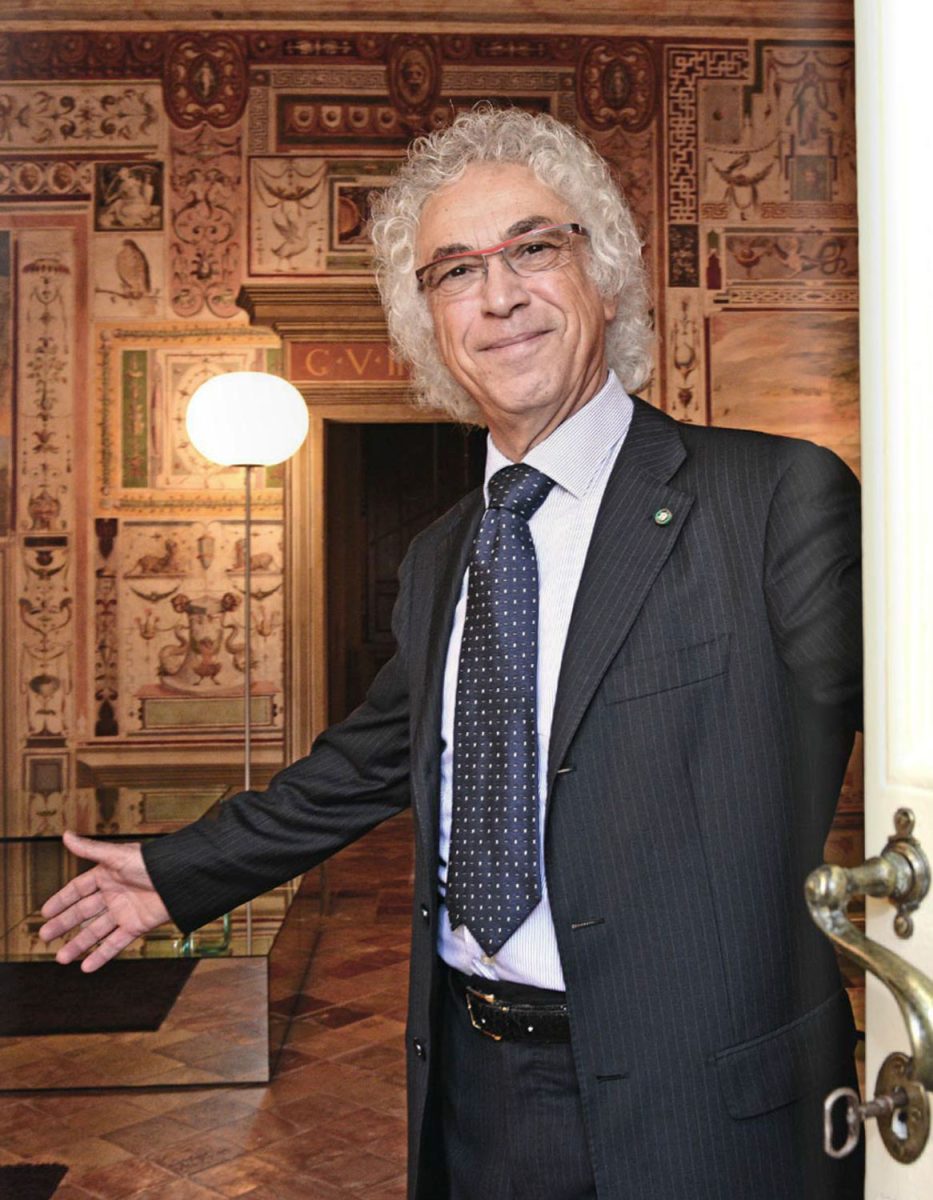
More than anything else, Villa Miralfiore represents FIAM Italia’s concept of art and the timeless, unprejudiced approach that has always been the hallmark of the company and its founder.
An ancient villa of rare beauty, with unique architecture, of historical interest and artistic value, located in the centre of Pesaro, within the park of the same name and a green breathing space in the city.
Today, it is home to a museum of glass works or art stemming from the many partnerships between Vittorio Livi and the greatest contemporary artists, and a design museum, with mass-produced products and unique pieces designed by the world’s greatest designers.
Villa Miralfiore is an architectural jewel set in the Pesaro area. The Renaissance-style building overlooks a loggia with granite columns that frames the formal Italian-style garden. A fascinating example of late Renaissance topiary, with well-formed evergreen bushes clipped into elegant shapes.
The five rooms on the first floor of the villa are of great artistic importance. The frescoes in the rooms, which were completed in 1573, are attributed to Federico Zuccari. Among other things, the pictorial cycle illustrates the feats possibly of Guidobaldo II Della Rovere, whose initials appear on the door frames.
The villa was, in fact, owned for a long time by the Dukes of Urbino and, after several changes of ownership among prominent families, was purchased by Vittorio Livi in the 1990s.
In addition to being the home of the Livi family and the company’s headquarters, the villa hosts a museum showcasing glass artworks created by great contemporary artists such as Pomodoro, Isgrò, Munari, Colombo, Bay, Valentini, Veronesi, Carmi, Mariani, to name but a few.
The FIAM Italia glass museum also showcases all the most important trends of Italian and international design from the 1970s to the present day, in particular projects and works by Cini Boeri, Massimo Morozzi, Bruno Munari, Vico Magistretti, Enzo Mari, Philippe Stark, Danny Lane, Daniel Libeskind, Doriana and Massimiliano Fuksas, Marcel Wanders and many others.
The part of the building used as a museum houses about sixty works along with other exhibition areas of the villa intended for the display of the current Fiam Italia collection: a refined combination of Renaissance atmospheres and elegant expressions of modernity.
The first settlement dates back to 1260: sources at the time refer to the land on which the Villa stands as Vividarium.
Around 1438, the Malatesta family made it a summer residence where the friars of St Francis of the Observance monastery were also accommodated.
In 1445, the property passed to the Sforza family. Costanza Sforza built a Villa named Toretta in the Vividarium, adorning the grounds with two graceful “torricelle”.
After the Sforza family, the property passed from the Pigna to the Superchi family and then, to Messer Simone Bonamini, superintendent of the court of Francesco Maria I, Duke of Urbino, who was responsible for the most significant expansion of the villa.
Francesco Maria I was succeeded by Guido Ubaldo II Della Rovere who completed the construction of the new city walls and, after becoming the owner in 1559, added two avenues leading to two large entrance gates or triumphal arches, designed by the architect, Filippo Terzi.
The ownership of the Villa passed to the house of Medici but was soon ceded to the Holy See, which gave it in emphyteusis to the aristocratic Albani family (known for Pope Clement XI) in the late 1700s.
The villa finally passed into the hands of Count Alberto di Castelbarco.
It was purchased in 1992 by Vittorio Livi and underwent extensive restoration throughout while preserving and enhancing all the structures of historical and artistic value.

Giacomo Mornico
Irene Sartor
Marco Tonet
Nicola Carpene
Simone De Gasperin
Webkolm
